This article has been reviewed according to Science X's editorial process and policies. Editors have highlighted the following attributes while ensuring the content's credibility:
fact-checked
reputable news agency
proofread
What to know about Boeing's first spaceflight carrying NASA astronauts
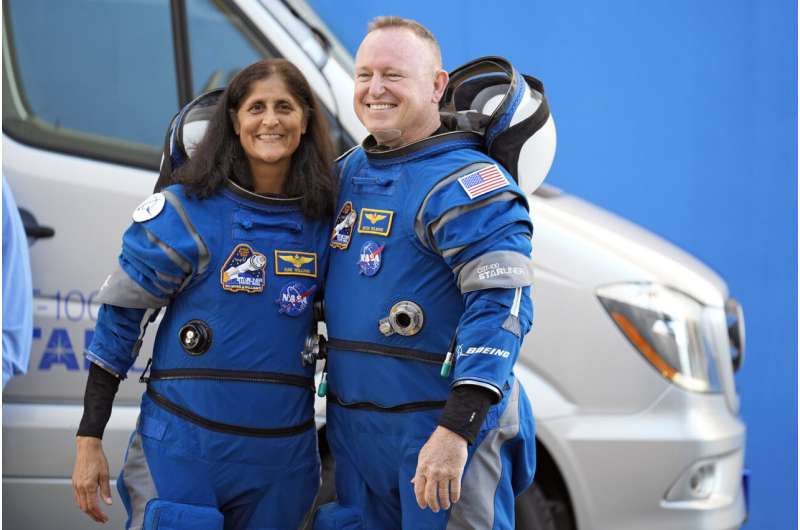
After years of stumbles and delays, Boeing has finally launched astronauts to the International Space Station for NASA.
It's the first flight of Boeing's Starliner capsule with a crew on board, a pair of NASA pilots who will check out the spacecraft during the test drive and a weeklong stay at the space station.
NASA turned to U.S. companies for astronaut rides after the space shuttles were retired. Elon Musk's SpaceX has made nine taxi trips for NASA since 2020, while Boeing has managed only a pair of empty test flights.
Provided this tryout goes well, NASA will alternate between Boeing and SpaceX to get astronauts to and from the space station.
A look at the newest ride and its shakedown cruise:
THE CAPSULE
White with black and blue trim, Boeing's Starliner capsule is about 10 feet (3 meters) tall and 15 feet (4.5 meters) in diameter. It can fit up to seven people, though NASA crews typically will number four. The company settled on the name Starliner nearly a decade ago, a twist on the name of Boeing's early Stratoliner and the current Dreamliner planes.
No one was aboard Boeing's two previous Starliner test flights. The first, in 2019, was hit with software trouble so severe that its empty capsule couldn't reach the station until the second try in 2022. Then last summer, weak parachutes and flammable tape cropped up that needed to be fixed or removed. Wednesday's launch was the third try with astronauts; two earlier countdowns were scuttled by rocket-related issues.
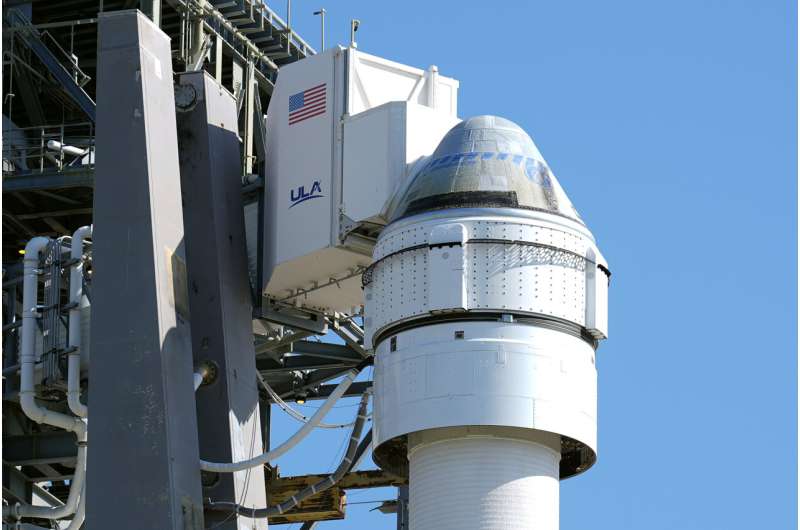
THE CREW
Veteran NASA astronauts Butch Wilmore and Suni Williams are retired Navy captains who spent months aboard the space station years ago. They joined the test flight after the original crew bowed out as the delays piled up. Wilmore, 61, is a former combat pilot from Mount Juliet, Tennessee, and Williams, 58, is a helicopter pilot from Needham, Massachusetts.
THE TEST FLIGHT
Starliner blasted off on United Launch Alliance's Atlas V rocket from Cape Canaveral Space Force Station. It's the first time astronauts have ridden an Atlas since NASA's Project Mercury, starting with John Glenn when he became the first American to orbit the Earth in 1962. Now 62 years later, Wednesday's launch was the 100th for the top-of-the-line Atlas V, which is used to hoist satellites as well as spacecraft. ULA is a joint venture of Boeing and Lockheed Martin.
Starliner should reach the space station with its seven residents on Thursday. Starliner will remain docked for just over a week, undergoing checkouts before landing in the American West.
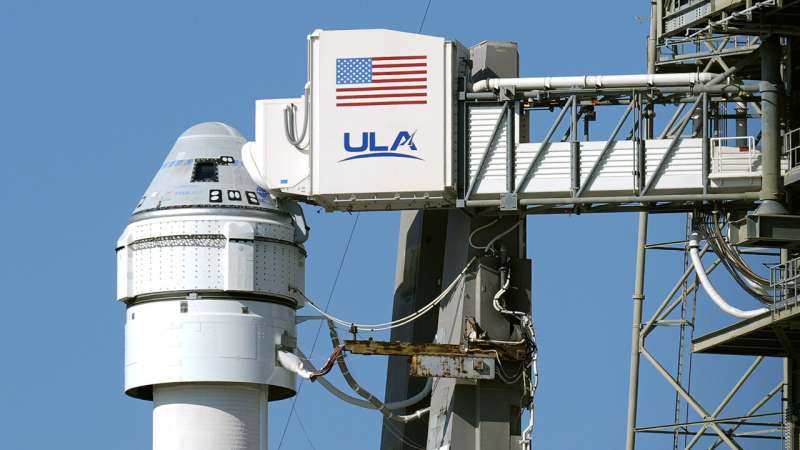
STARLINER VS. DRAGON
Both Boeing and SpaceX's capsules are designed to be autonomous and reusable. This Starliner is the same one that made the first test flight in 2019. Unlike the SpaceX Dragons, Starliner has traditional hand controls and switches alongside touchscreens and, according to the astronauts, is more like NASA's Orion capsules for moon missions. Plans called for Wilmore and Williams to briefly take manual control to test out the systems on their way to the space station.
NASA gave Boeing, a longtime space contractor, more than $4 billion to develop the capsule, while SpaceX got $2.6 billion. SpaceX already was delivering supplies to the space station, and merely refashioned its cargo capsule for crew. While SpaceX uses the boss' Teslas to get astronauts to the launch pad, Boeing has a more traditional "astrovan."
One big difference at flight's end: Starliner lands on the ground with cushioning airbags, while Dragon splashes into the sea.
-
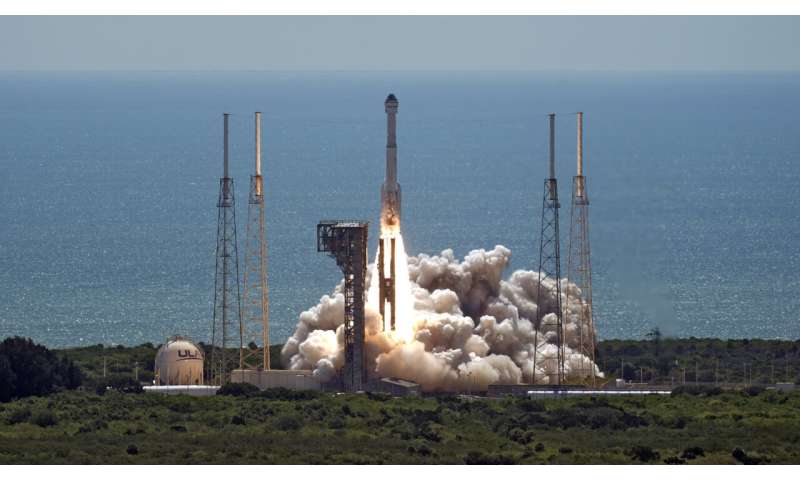
Boeing's Starliner capsule, atop an Atlas V rocket, lifts off from launch pad at Space Launch Complex 41 Wednesday, June 5, 2024, in Cape Canaveral, Fla. NASA astronauts Butch Wilmore and Suni Williams are headed to the International Space Station. Credit: AP Photo/Chris O'Meara -
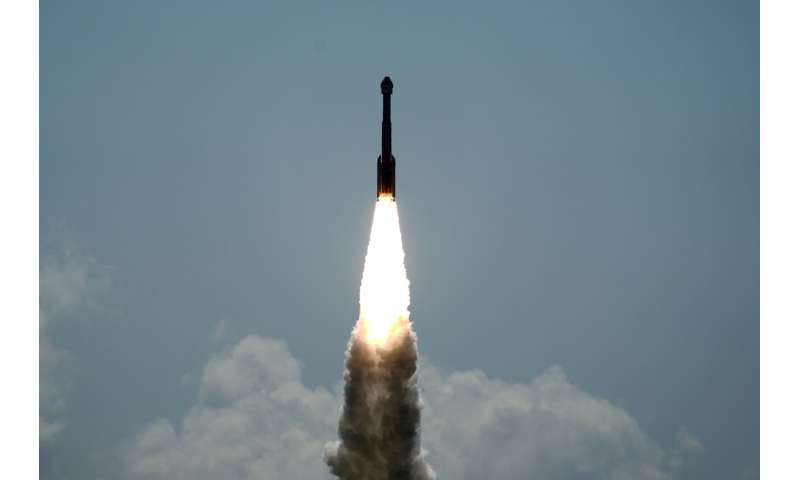
Boeing's Starliner capsule, atop an Atlas V rocket, lifts off from launch pad at Space Launch Complex 41 Wednesday, June 5, 2024, in Cape Canaveral, Fla. NASA astronauts Butch Wilmore and Suni Williams are headed to the International Space Station. Credit: AP Photo/Chris O'Meara
THE FUTURE
Boeing is committed to six Starliner trips for NASA after this one, which will take the company to the station's planned end in 2030. Boeing has said a fifth seat will be available to private clients. SpaceX periodically sells seats to tycoons and even countries eager to get their citizens to the station for a couple weeks, but these rides are separate from NASA's dedicated six-month missions.
Coming soon: Sierra Space's mini shuttle, Dream Chaser, which will attempt to deliver cargo to the station later this year, before accepting passengers. It is due to launch on ULA's new Vulcan rocket, the eventual successor to the Atlas V.
© 2024 The Associated Press. All rights reserved. This material may not be published, broadcast, rewritten or redistributed without permission.



















